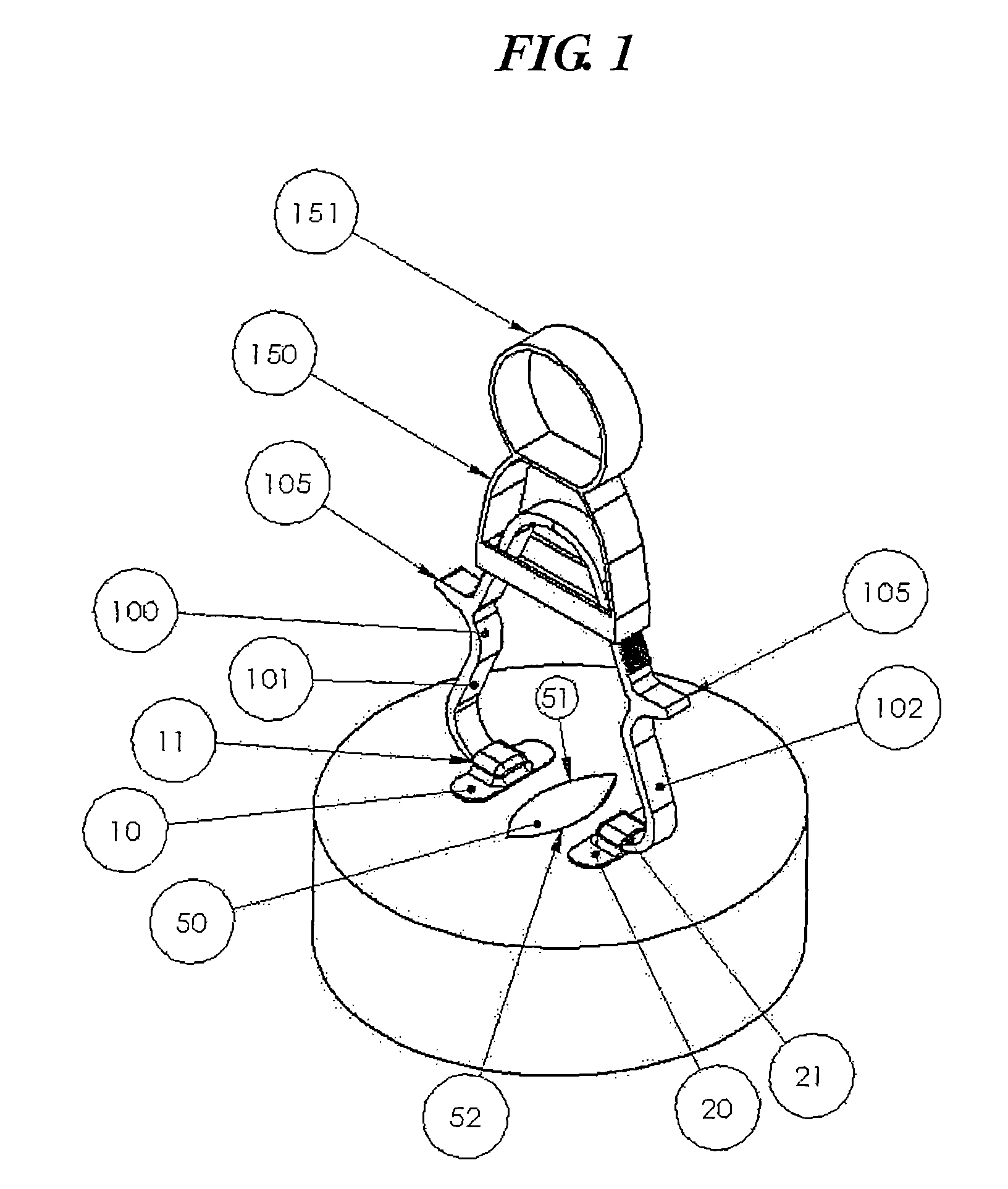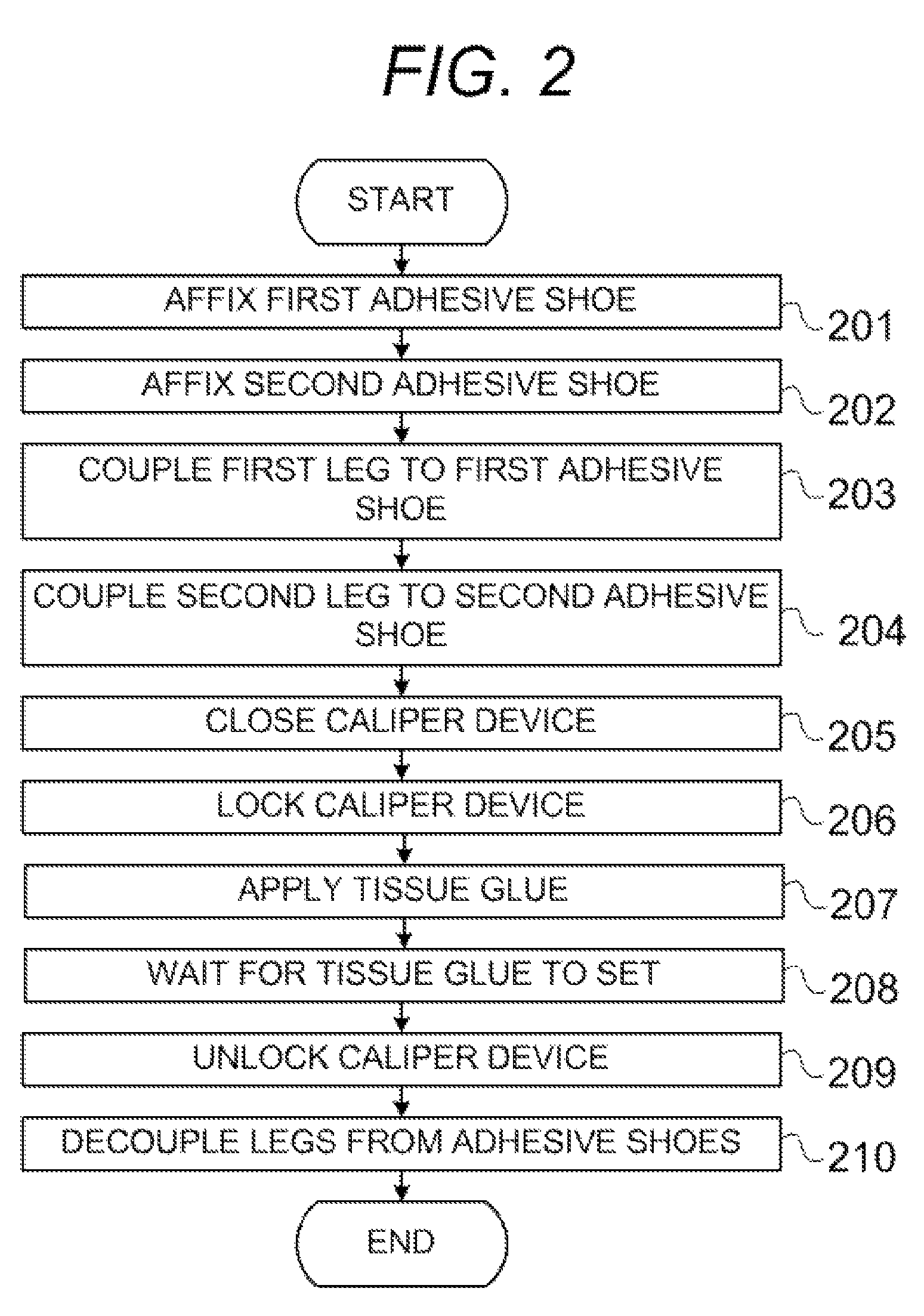Wound closing device
a skin wound and applicator technology, applied in wound clamps, medical science, surgery, etc., can solve the problems of limited degree of control over the wound edge, unfavorable wound closure, and forceps not well suited to this task
- Summary
- Abstract
- Description
- Claims
- Application Information
AI Technical Summary
Benefits of technology
Problems solved by technology
Method used
Image
Examples
Embodiment Construction
[0053]The present invention is designed for use within a medical treatment environment for the purpose of closing skin wounds in place of more traditional stitches.
MODE(S) FOR CARRYING OUT THE INVENTION
[0054]Refer first to FIG. 1, which shows a first illustrative embodiment of the present invention. A patient has an open wound 50 that a surgeon is working to close with a forceps device 100, such as tissue approximation forceps. A left adhesive shoe, such as a first bandage 10, is applied to the patient's skin adjacent to a first longitudinal edge 51 of wound 50. A right adhesive shoe, such as a second bandage 20, is applied to the patient's skin adjacent to a second opposing longitudinal edge 52 of wound 50. Next, the forceps legs 101 and 102 are slipped into the respective left and right shoes, such as open pocket portions 11 and 21 of the first and second bandages 10 and 20. The forceps has sufficient stiffness to cause eversion of the wound edges when they are brought together by...
PUM
 Login to View More
Login to View More Abstract
Description
Claims
Application Information
 Login to View More
Login to View More - R&D
- Intellectual Property
- Life Sciences
- Materials
- Tech Scout
- Unparalleled Data Quality
- Higher Quality Content
- 60% Fewer Hallucinations
Browse by: Latest US Patents, China's latest patents, Technical Efficacy Thesaurus, Application Domain, Technology Topic, Popular Technical Reports.
© 2025 PatSnap. All rights reserved.Legal|Privacy policy|Modern Slavery Act Transparency Statement|Sitemap|About US| Contact US: help@patsnap.com



